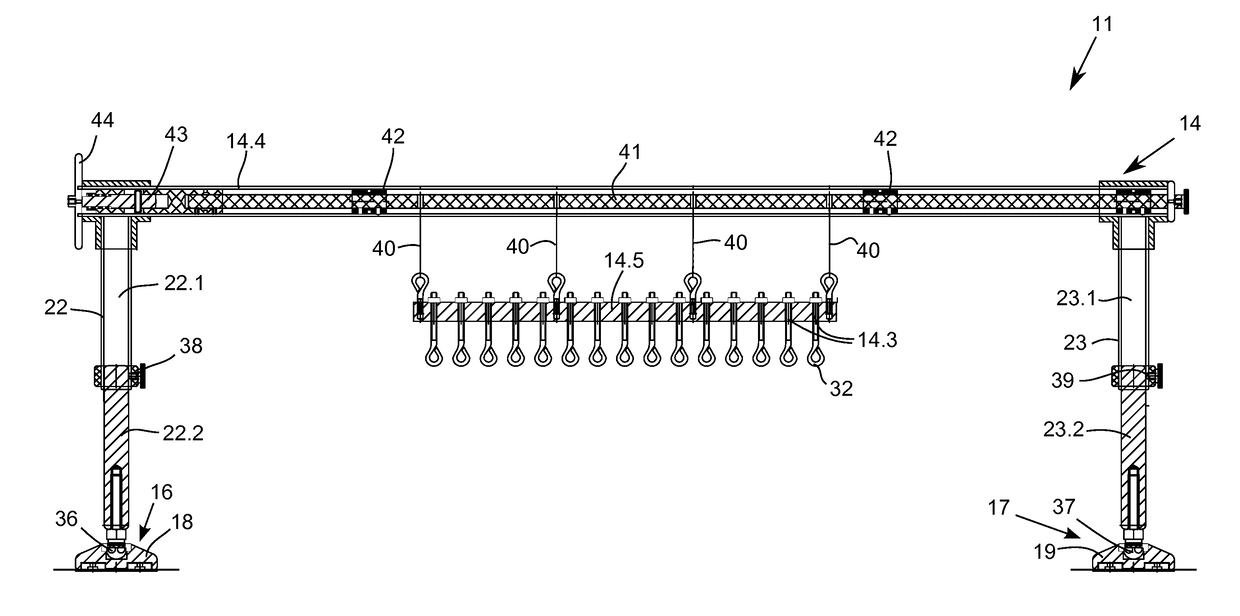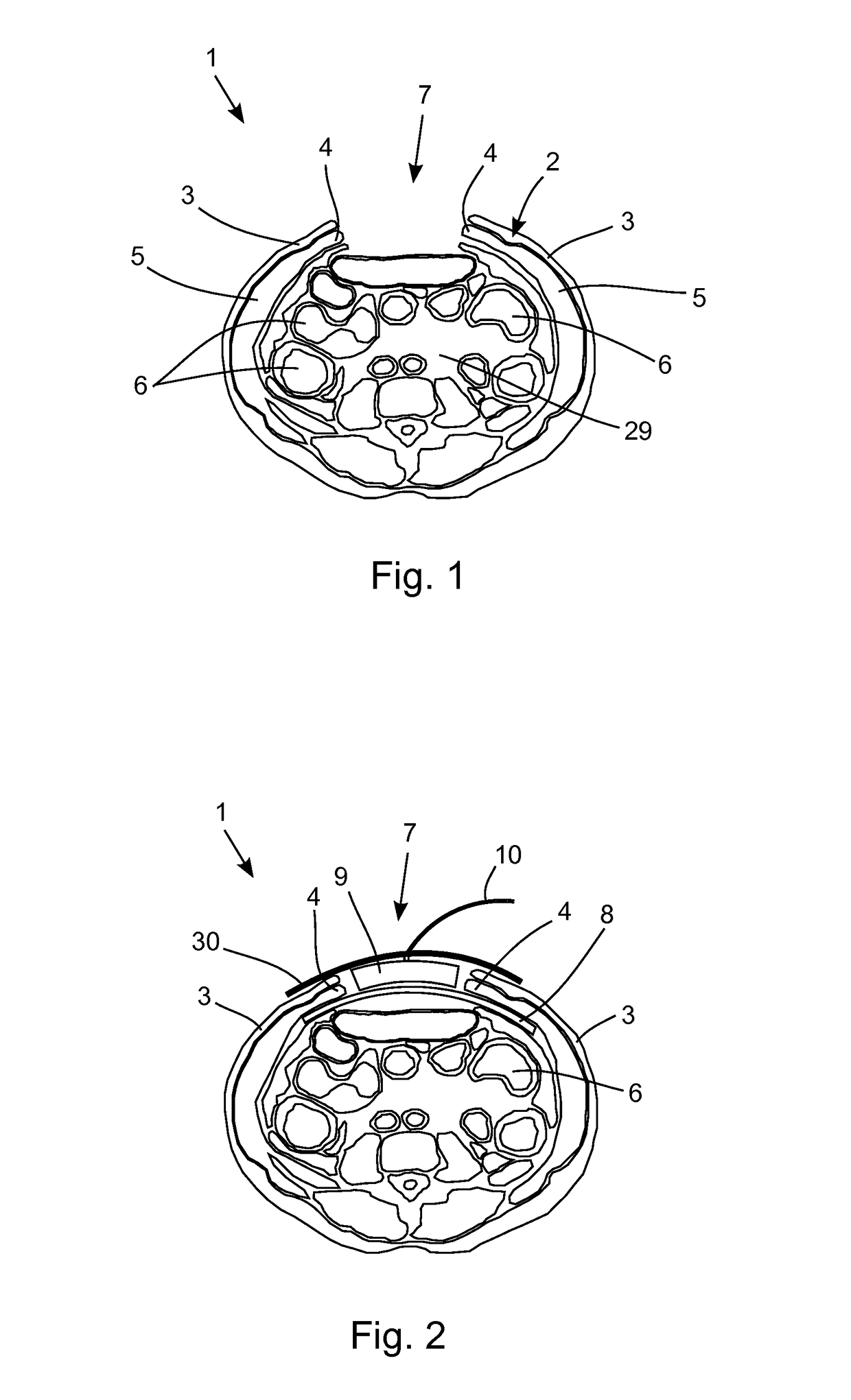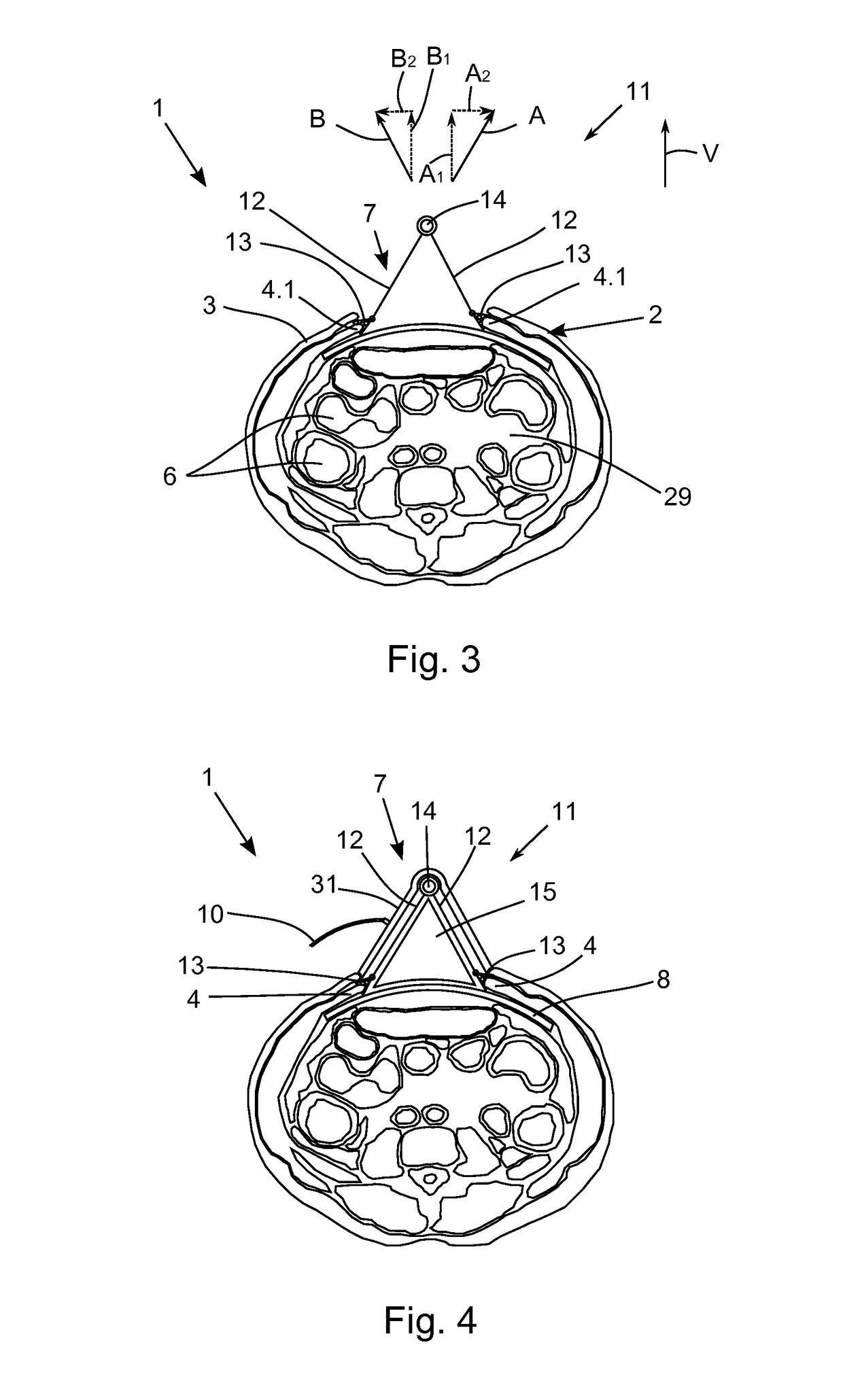Device for reducing the retraction of a fascia or a soft tissue mantle in an open soft tissue defect
a soft tissue defect and retraction technology, applied in the field of open soft tissue defect retraction devices, can solve the problems of difficult or impossible closure of the abdominal wall and thus the open fascia after normal intra-abdominal pressure, the edge of the open fascia can be retracted, and the abdominal wall can be closed, so as to reduce the retraction of the edges of the open fascia, increase the strength, and increase the stability
- Summary
- Abstract
- Description
- Claims
- Application Information
AI Technical Summary
Benefits of technology
Problems solved by technology
Method used
Image
Examples
Embodiment Construction
[0083]FIG. 1 illustrates a transverse section through an open human abdomen. The abdominal wall 2 is composed substantially of the skin 3, of the abdominal muscle 5 situated under the skin 3, and of the fasciae 4. Between the skin 3 and the abdominal muscle 5 there is arranged subcutaneous tissue (not illustrated in the figures). The fasciae 4 are of great importance for the stability of the abdominal wall 2. The fasciae 4 enclose the abdominal muscle 5 and lie against that side of the skin 3 which faces toward the abdominal cavity 29.
[0084]In the case of some disease patterns which are associated with an intra-abdominal pressure increase, an abdominal compartment syndrome, it may be necessary to lower the pressure by opening up the abdominal wall 2 of the patient 1 and removing excess gases and / or liquids from the abdominal cavity 29 through abdominal wall opening 7 created by surgical measures. Here, it may be the case that internal organs, for example the intestines 6, emerge thr...
PUM
 Login to View More
Login to View More Abstract
Description
Claims
Application Information
 Login to View More
Login to View More - R&D
- Intellectual Property
- Life Sciences
- Materials
- Tech Scout
- Unparalleled Data Quality
- Higher Quality Content
- 60% Fewer Hallucinations
Browse by: Latest US Patents, China's latest patents, Technical Efficacy Thesaurus, Application Domain, Technology Topic, Popular Technical Reports.
© 2025 PatSnap. All rights reserved.Legal|Privacy policy|Modern Slavery Act Transparency Statement|Sitemap|About US| Contact US: help@patsnap.com



